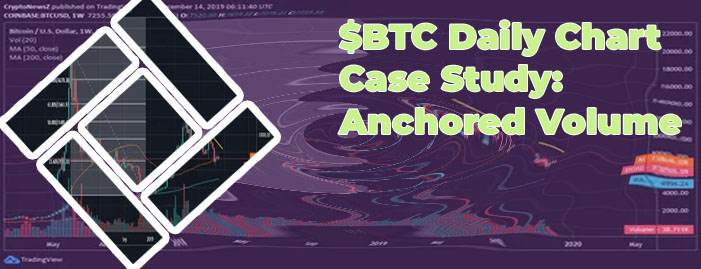Bitcoin tracker

Bitcoin has been a popular topic of discussion in recent months, with many investors closely monitoring its performance on the market. Analyzing the 3-month chart of Bitcoin can provide valuable insights into its price trends and potential future movements. To help you better understand Bitcoin's 3-month chart, here are 4 articles that delve into different aspects of this cryptocurrency's performance.
Breaking Down Bitcoin's 3-Month Price Movement: What to Expect Next
Over the past three months, the price of Bitcoin has experienced significant fluctuations, leaving many investors wondering what to expect next. This article provides a comprehensive analysis of Bitcoin's price movement, shedding light on the factors driving its volatility.
One of the key takeaways from the article is the impact of market sentiment on Bitcoin's price. As the cryptocurrency market is highly speculative, investor sentiment plays a crucial role in determining price movements. Factors such as regulatory developments, macroeconomic trends, and institutional interest can all influence market sentiment and, in turn, Bitcoin's price.
Additionally, the article highlights the role of technical analysis in predicting Bitcoin's price movement. By analyzing historical price data and identifying key support and resistance levels, traders can gain valuable insights into potential price trends. Technical indicators such as moving averages, RSI, and MACD can also help traders make informed decisions about when to buy or sell Bitcoin.
In conclusion, to better understand Bitcoin's price movement and make informed investment decisions, investors should consider monitoring market sentiment, conducting thorough technical analysis, and staying informed about regulatory developments. By staying informed and adopting a strategic approach to trading, investors can navigate the volatile cryptocurrency market with confidence.
Key Factors Influencing Bitcoin's Price on the 3-Month Chart
Over the past few months, Bitcoin's price has experienced significant fluctuations on the 3-month chart, influenced by various key factors. One of the main drivers of Bitcoin's price movements is market demand, which is often influenced by global events and economic indicators. For example, the recent surge in Bitcoin's price can be attributed to the increasing interest from institutional investors and large companies like Tesla, MicroStrategy, and Square, who have started adding Bitcoin to their balance sheets.
Another key factor influencing Bitcoin's price is market sentiment, which can be affected by news about regulatory developments, technological advancements, or security breaches in the cryptocurrency space. For instance, when news broke about the US government's plans to regulate cryptocurrencies more closely, Bitcoin's price experienced a sharp decline as investors feared increased scrutiny and potential restrictions.
Furthermore, the supply of Bitcoin also plays a crucial role in determining its price. With the recent halving event in May 2020, the rate at which new Bitcoins are created was cut in half, leading to a decrease in supply. This scarcity factor has historically driven up the price of Bitcoin as investors anticipate a future increase in demand.
Comparing Bitcoin's 3-Month Chart with Historical Data: Patterns and Predictions
Bitcoin's price movements have always been a topic of interest for investors and traders alike. By comparing Bitcoin's 3-month chart with historical data, patterns and potential predictions can be drawn to help guide decision-making in the volatile cryptocurrency market.
One of the first things that stand out when analyzing Bitcoin's 3-month chart is the recurring patterns that seem to emerge. These patterns can provide valuable insights into potential future price movements. For example, the formation of cup and handle patterns or head and shoulders patterns can indicate potential trend reversals or continuations.
Moreover, by comparing the current price levels with historical data, analysts can identify key support and resistance levels that have proven to be significant in the past. These levels can act as important markers for potential entry or exit points for traders.
Another important aspect to consider when comparing Bitcoin's 3-month chart with historical data is the overall market sentiment. By analyzing factors such as trading volume, market capitalization, and investor sentiment, analysts can gauge the overall health of the market and make more informed decisions.
In conclusion, comparing Bitcoin's 3-month chart with historical data can provide valuable insights into potential price movements and help investors and traders navigate the volatile cryptocurrency market more effectively.
Key points to consider:
- Identify recurring patterns in Bitcoin's
Expert Analysis: Interpreting Bitcoin's 3-Month Chart for Investment Strategies
I recently had the opportunity to delve into a detailed analysis of Bitcoin's 3-month chart for investment strategies. The insights provided were truly enlightening and gave me a fresh perspective on the cryptocurrency market. The expert analysis highlighted key trends and patterns that can be crucial for making informed investment decisions in the volatile world of digital assets.
One of the most intriguing aspects of the analysis was the focus on identifying support and resistance levels within the 3-month chart. By pinpointing these levels, investors can better understand potential price movements and adjust their strategies accordingly. Additionally, the analysis touched upon important technical indicators that can help in gauging market sentiment and predicting future price movements.
Overall, the analysis provided a comprehensive overview of Bitcoin's recent performance and offered valuable insights into potential investment strategies. Whether you are a seasoned investor or a newcomer to the cryptocurrency space, this analysis can serve as a valuable tool in navigating the complex world of digital assets.
In conclusion, this article is important for investors looking to gain a deeper understanding of Bitcoin's price movements and develop effective investment strategies in the cryptocurrency market. By leveraging the insights from this analysis, investors can make more informed decisions and potentially enhance their portfolio performance.

